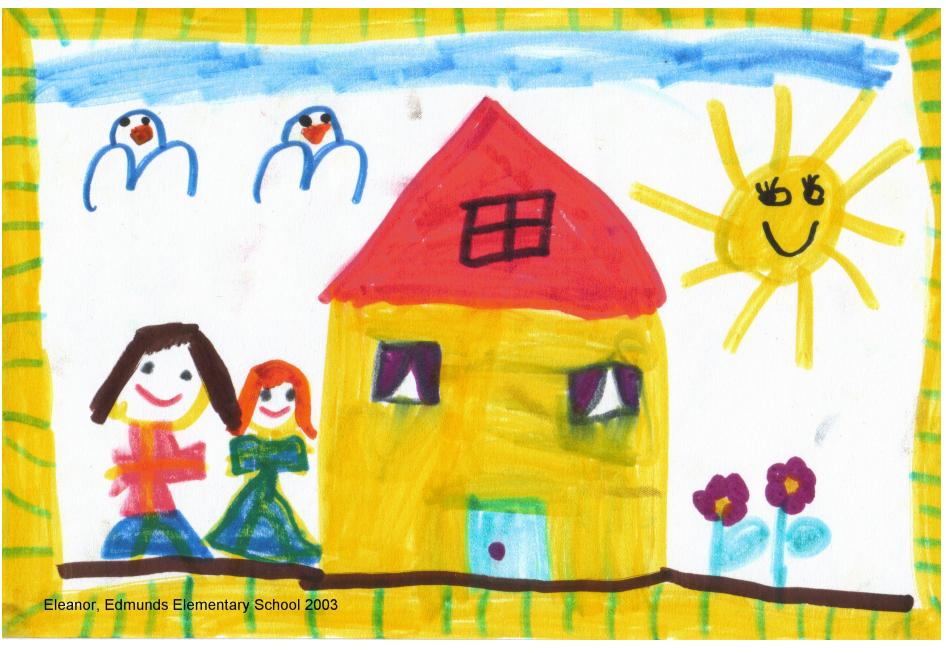Homelessness can be tough to discuss with children because it can lead to conversations about many other complex topics, but it is possible. How we talk to children about homelessness depends on their age and how they best learn, as well as the discussion context (home with family or caregivers; or at school with teachers).

Talking with children as parents/caregivers
Of course, the “best” tactic here is the one that the parents/caregivers are most comfortable with – they know the kids best! That said, these early talks have a profound effect on how kids understand homelessness and people experiencing it. As Betsy Brown Braun wrote for The Huffington Post blog last year, many kids haven’t yet formed opinions about homelessness, so these conversations are crucial:
It is important to understand that homelessness is not a “loaded” issue for the child... yet. His questions about a homeless person usually stem from genuine curiosity. That person doesn’t fall into any of the categories of people with whom he is familiar. He is not passing judgment; he is wondering. The young child’s initial impression is heavily influenced by the parent’s affect, actions, and responses to his questions. And it is by observation of the parent that the child first gets his cues about how to react and feel. So, as you answer your child’s questions, be aware of the attitude you may be projecting.
Further on in the post, she states that we should aim to convey compassion and empathy in our responses. Given the immense degree of stigma and discrimination that people experiencing homelessness face every day, I completely agree. So what might those kinds of responses look like?
With younger children, I’ve been told that the simpler the answer is, the better. For example, here is how my sister responded to my six-year-old niece when she first asked why someone was sleeping on the sidewalk:
I explained to her that they are just like us but things have happened in their lives that have brought them to this point. I told her that we are lucky to have the resources and support we have; and that they sometimes need support, so that’s why we give them money or food when we have it. I didn’t have to go much further than that, but more questions tend to come later.
My niece probably isn’t fully ready to understand concepts like poverty, family conflict, class inequality, trauma, and all the other major pathways to homelessness; but she is able to understand the need to help people and not blame them for their circumstances. In a few sentences, my sister conveyed that homelessness isn’t caused by any one thing, that it can happen to anyone, and that housing in our society is a privilege. As children get older and ask deeper questions, responses can grow accordingly.
Talking to kids as educators
The Homeless Hub’s Education section has a number of lesson plans and suggested activities for children of all ages. (Many of these resources will be helpful to parents and other caregivers as well.) In 2009, the Homelessness and Housing Umbrella Group (HHUG) created a number of resources for educators in the Waterloo, Ontario region. Though some of the materials are area-specific, they can be customized for any municipality. Similarly, its general guidelines for classroom discussions about homelessness are appropriate for any education context:
Encourage open discussion about what students know about homelessness and about any questions they might have.
Address stereotypes as they arise with facts (i.e., The Truth about Homelessness, p.6-8).
Help students become more aware of what their home means to them. Link what their home means to them to how they might feel if they did not have a home.
Explain that being homeless means that one does not have a place to call home. It might be for a day or two or for many weeks or months. Talk about how difficult it is.
Help students understand that being homeless doesn’t mean that someone has done something wrong. It isn’t an illness and it certainly isn’t anything someone wants. It can be a result of difficult times in a person’s life.
Discuss the different places people might live if they don’t have a home (i.e., shelter,car, with friends).
Explain that there are single people, families, and children who do not have a home.
Read stories and books about people from all walks of life and/or about homelessness (p.37). Help students to realize that in spite of differences, people experience many of the same feelings.
Conclude discussions of homelessness with ideas about how students and communities can help people who don’t have a home (p.37).
In terms of specific activities, primary-level students need to build a basic understanding of poverty and homelessness. This integrated unit was developed in Toronto in 2008 and can be used in a variety of classes and grades. Activities include reading picture books like Fly Away Home and reflecting on the characters and the meaning of home, true/false exercises, mock food and utility budgets, creating multimedia and/or poetry quilts, and more.
At the secondary-level, students can gain a deeper understanding of homelessness through more advanced activities. One example is this unit on learning about homelessness through drama (grades 9-12, can be modified for 6-8), which includes a simulated emergency relocation and other exercises that have students imagine what it might be like to be homeless. These activities all encourage empathy through experience. To see how some Markham, Ontario students responded to learning through drama, check out their five Street Stories.
This post is part of our Friday "Ask the Hub" blog series. Have a homeless-related question you want answered? E-mail us at thehub@edu.yorku.ca and we will provide a research-based answer.
Photo: "Home" drawn by Eleanor in 2003 at Edmunds Elementary School, Unsheltered Lives: An Interdiscplinary Resource and Activity Guide for Teaching About Homelessness in Grades K-12

